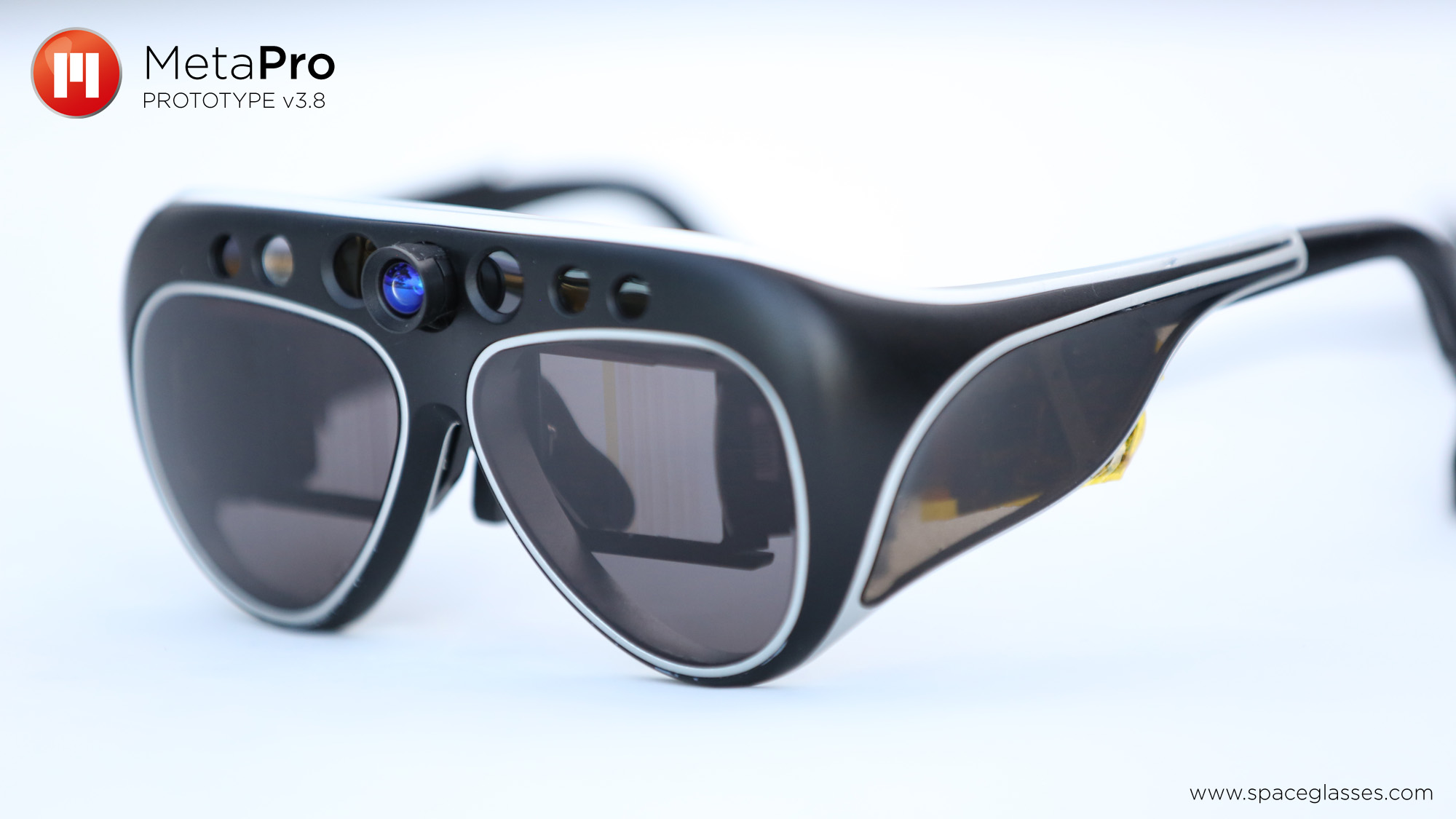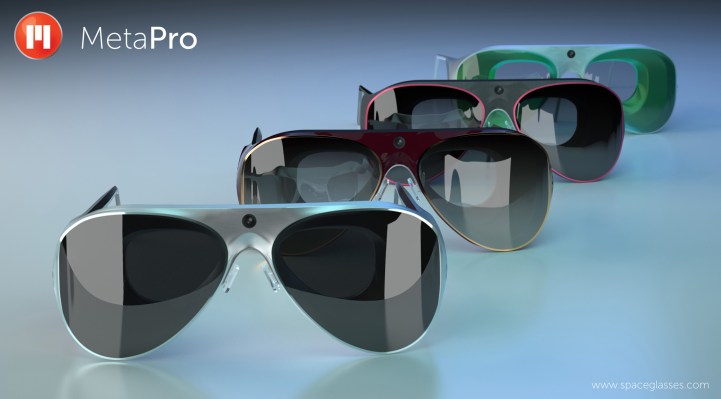Augmented reality startup Meta has spent the past few years making prototypes of wearable devices featuring see-through optics and a wide variety of sensor arrays. Now it’s starting production on its first generation of units for developers and taking pre-orders for a consumer-facing version of its product.
Meta had previously pre-sold an earlier iteration of its wearable device, called the META.01, which was designed to appeal to early adopters and developers who wish to design for the platform. The META.01 was priced at $667, as part of its effort to get developers on board with the technology.
But they were also pretty crude in terms of what they look like and how functional they are: The META.01s have to be plugged into a computer to work, for instance, but that’s fine for now, since they’re meant to be programmed on. They’re also pretty boxy and geeky looking, but again, as a developer kit we’re talking about function over form.
Here’s how my colleague Greg Kumparak described them:
To picture the Meta, picture a pair of glasses — or, more accurately in its current stage, a pair of safety goggles. Put a translucent, reflective surface in each eye piece, displaying images on top of your field of view as piped out of a tiny projector built into each arm of the frames. Take a couple tiny RGB/Infrared cameras — essentially a miniature Kinect — and strap them to the frame. That’s the Meta.
Well, the META.01 units that were pre-ordered are now getting ready to ship, which means the company believe it’s the right time to jump into its second phase of production and create some consumer demand for its product.
The consumer version of the glasses will be a lot sleeker — indeed, I’ve seen an early prototype and they look a lot more like something you’d actually wear out and about. But they’re also even more powerful than the META.01 version that developers and early adopters got to play with.

The display includes ultra-thin see-through optics with a 40-degree field of vision. Each display is built to play 720p HD, and with two of them, they’re aligned to display stereoscopic 3D. The sensor array will include dual RGB video and photo sensors, as well as nine-axis tracking with accelerometer, gyroscope, and compass included.
The combination of optics and sensors means that Meta and third-party developers can overlay a whole bunch of interesting things into your field of view that you can interact with. In addition to developing the glasses, Meta’s also done a bunch of work creating software that can recognize hand gestures and display video in 3D. If you haven’t seen a demo yourself, again, read Greg’s post about the capabilities.
To make it all work, Meta has put some serious technology under the hood. The Meta Pro will ship with an i5 CPU, 4GB of RAM, 128 GB of storage, Wi-Fi 802.11n and Bluetooth 4.0 connectivity. The whole package will cost $3,000, and the company hopes to ship by June.
Google Glass might be the first really functional wearable display technology, but Meta is hoping to do a lot more. And for double the price, it should. The Meta Pro has 15x the display of Google Glass, and runs 3-D instead of just 2-D. Its optics are thinner, at 2mm vs 5mm, and its sensors recognize hand gestures, which makes control a lot easier than touching the side of your face.
Then again, Google Glass isn’t the only competitor out there. Oculus VR just raised $75 million to bring its virtual reality goggles to the masses. And it already has 42,000 developer units out in the wild.
It’ll take some time for augmented and virtual reality to become mainstream, let alone to determine who wins that space. In the meantime, the new Meta Pro wearables look like an attractive choice for early adopters.
